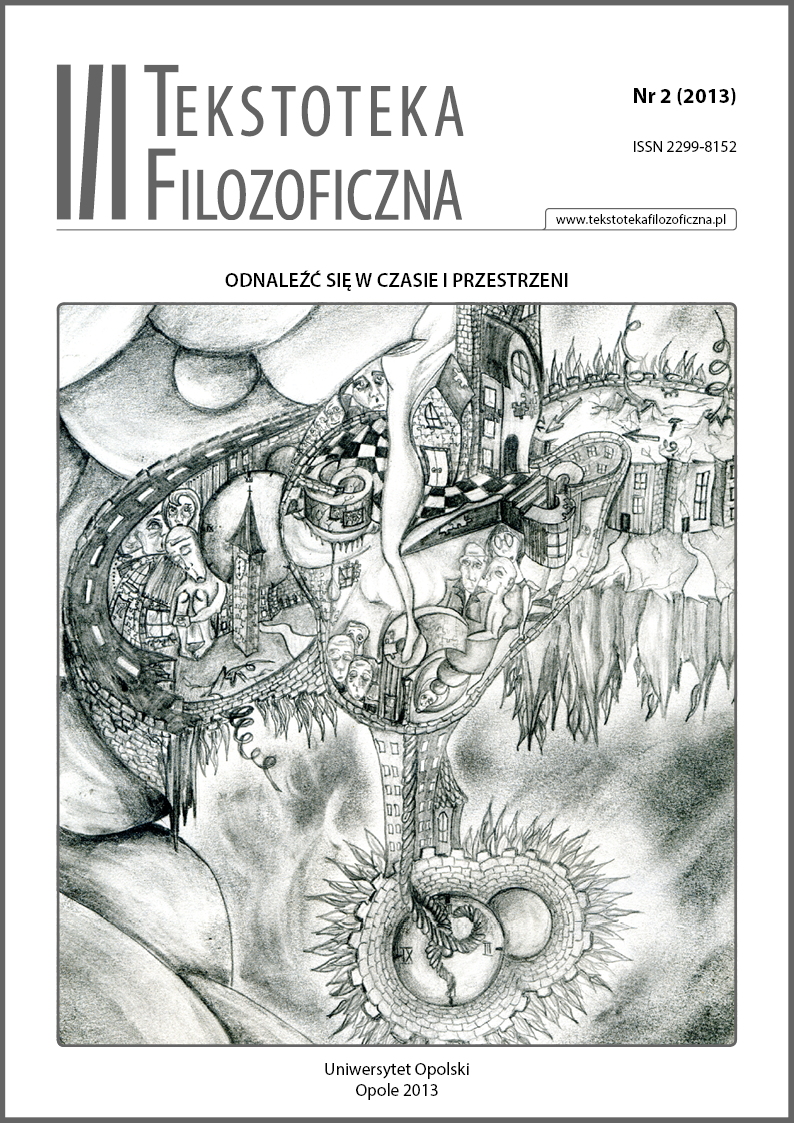Problem czasu i przestrzeni u Melissosa z Samos
The Problem of Melissus of Samos’s Time and Space
Author(s): Michał JanochaSubject(s): Philosophy, History of Philosophy, Special Branches of Philosophy
Published by: Uniwersytet Opolski
Keywords: time; space; periodicity; actuality; creation; destruction; being; dyad; mind; monism
Summary/Abstract: The problem with time and space in ancient Greek is very complicated. A Greek dictionary of synonyms has many various terms. Only some of the terms, for example space (χώρα, ἡ) and time (χρόνος, ὀ), are 'inherent' in philosophy. Another example is the term 'neutral'. But probably all of the interpretations of time and space in Greek philosophy may be shown by a few questions: 1. the periodicity and actuality of cosmos (Heraclitus of Ephesus), 2. the notions of creation (γίγνομαι), destruction (διαφθείρω) and being, which are considered by Parmenides, 3. so-called 'divisions' (Zeno of Elea), 4. the description of the notion of defining things in general (Melissus's ὅ τι), 5. the continuation of these problems (points 1 to 4) by a) Plato's Parmenides and Theaetetus, and b) Aristotle's categories of time and space (πουῦ – 'where', and ποτέ – 'when'). The notion of source (πηγή, ἡ) in the context of time and space is noticed by Hesiod (Theogony). His conception may be considered by comparing it to an aphorism 'everything flows' (Heraclitus) and the notion of mind (Parmenides). This article refers to the issue of time and space included in the texts of Melissus of Samos. The first differences between the notions of being (ὄν, τὸ ὄν, τὸ ἐόν, ἐόν) and the notion of defining things in general (Melissus's ὅ τι) are signaled by relating them to the category of noema (νόημα) in Parmenides's doctrine and the criticism of phytagorean's influences which make Melissus's dyad a number. The next thing, nature of being, which is based on the kernel of Eleatic mind and is interpreted by Gródek as 'thinking which refers itself', is applied to the agreement between Parmenides and Melissos. The conception of the present, which is forged in the area of Zeno of Elea (Gródek), is transposed to Melissos. The explanation of 'the arrow of time' is based on what has been said here. This explanation shows the identity between the past and the future concurrently. This identity is created with the change of cosmos/order (κόσμος, ὁ). Melissos's place of 'the eternal being' is designed together with the terms of eternity and the passing of time (παρεληλυθὼς χρόνος). After that, using the example of the states of aggregation, admitting (εἰσδέχομαι) the passing of time and objects is interpreted in being as such. In the situation described, there is a hypothesis of Melissos's states of aggregation and passing of time which is not primarily connected with creation (γίγνομαι) and the bound (τελεuτάω) as space. In the present described above, one may show that one of interpretations of time can be science of number (ἀριθμός, ὁ).
Journal: Tekstoteka Filozoficzna
- Issue Year: 2013
- Issue No: 2
- Page Range: 5-16
- Page Count: 12
- Language: Polish

